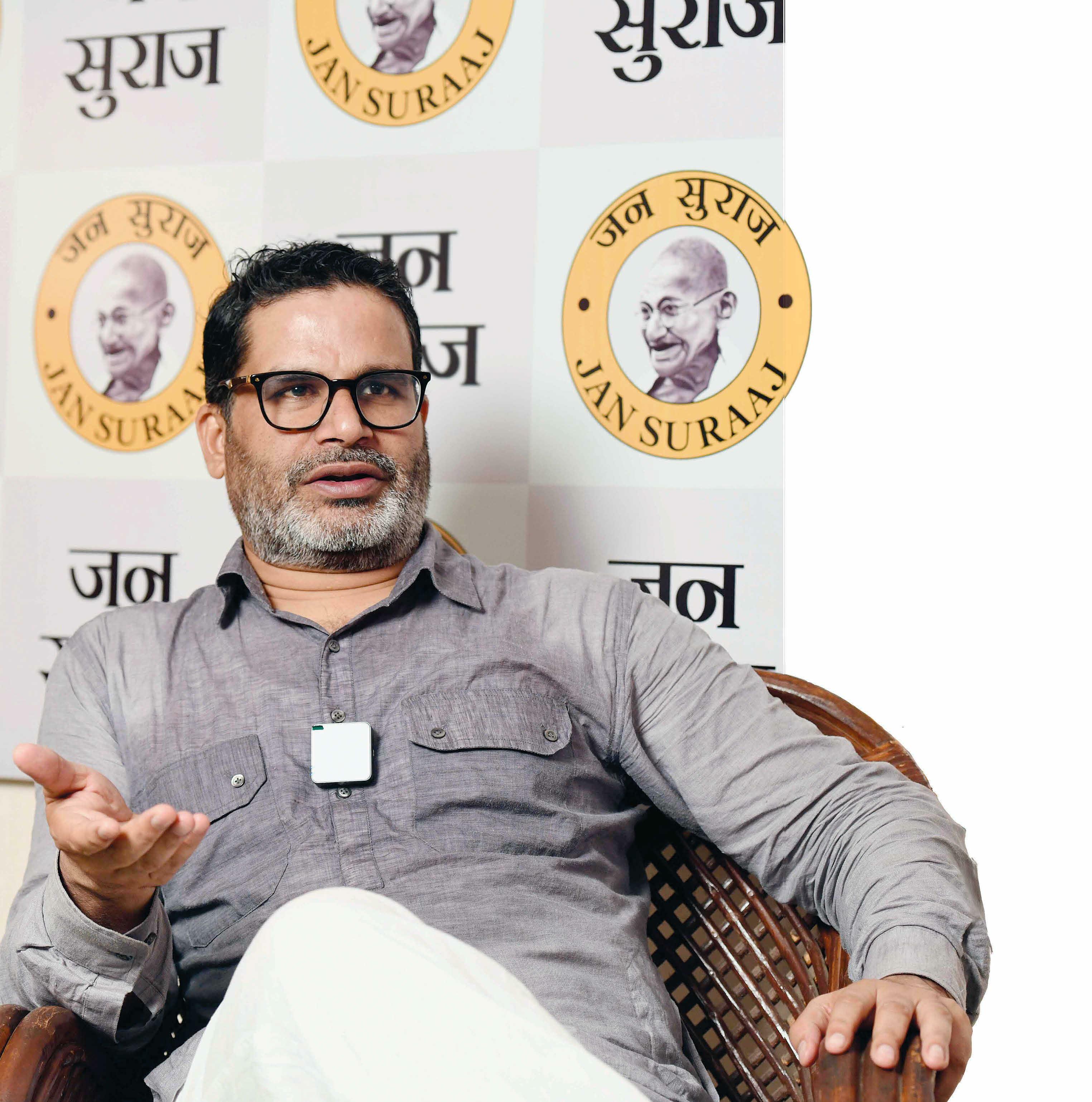
This is where Prashant Kishor has been staying for the past two and a half years, after he quit political consultancy to become, in his words, a political activist en route to becoming a politician.
The address has seen a rush of visitors in the run-up to the launch of Jan Suraaj, Kishor's new political party. Earlier, said an associate, they were reaching out to the people; now the people were approaching them. Kishor has been meeting all of them, thanking them for coming to Patna for the party's launch.
A recurring theme in his interactions is that the party will work for the future of Bihar's children. He tells people that, in six months, the name Jan Suraaj will be heard everywhere in the state. He has a bad throat after all the speeches he has been making, but he knows he cannot take a break.
For the past several days, Kishor has been burning midnight oil to plan the party’s launch. His meticulous planning and eye for detail show in the publicity material. The banners and posters are in yellow and black, the colours that Kishor believes attract maximum attention.
Kishor is the newest leader in Bihar’s vibrant political landscape. After attending the convention where Jan Suraaj was formally launched as a party, he returns to his house surrounded by supporters who raise slogans of ‘Jai Bihar’. He shakes hands with everyone and gives occasional hugs. The challenge for him is mammoth—make an impact in the complex political map of Bihar.
In the midst of all the excitement, Kishor sits down for an exclusive interview with THE WEEK, his first since the launch of the party. In a detailed interaction, he talks about the vision behind his party, how it is distinct from the others, and what it seeks to achieve for Bihar. Excerpts:
Q How is Jan Suraaj different from other political parties?
Denne historien er fra October 13, 2024-utgaven av THE WEEK India.
Start din 7-dagers gratis prøveperiode på Magzter GOLD for å få tilgang til tusenvis av utvalgte premiumhistorier og 9000+ magasiner og aviser.
Allerede abonnent ? Logg på
Denne historien er fra October 13, 2024-utgaven av THE WEEK India.
Start din 7-dagers gratis prøveperiode på Magzter GOLD for å få tilgang til tusenvis av utvalgte premiumhistorier og 9000+ magasiner og aviser.
Allerede abonnent? Logg på

Why Trump covets Greenland
There’s no denying it. Donald Trump is a prince among real estate developers, known for his pushy, winner-takes-all approach.

Bomb man who kept his mouth shut
The best thing about Rajagopala Chidambaram, who passed away recently, was that he “could keep his mouth shut”, as his mentor Raja Ramanna wrote in his memoir, Years of Pilgrimage. No wonder, he tested six atom bombs with no CIA, ISI or satellite spy eyes getting any wiser beforehand.

Extreme to mainstream
With the recent surrender of six Naxals, Chief Minister Siddaramaiah declares Karnataka almost “Naxal-free”. The BJP is questioning his “closeness” to the far left

SUMMITS, SURVIVAL AND SERVICE
Mountaineering expeditions play a crucial role in mountain warfare training

EYES ON THE ICE
THE INDIAN ARMY TRAINS ITS MOUNTAIN WARRIORS AT THE MACHOI GLACIER WHERE THEY LEARN ICE AND SNOW CRAFT IN SUB-ZERO TEMPERATURES. THE HIGH ALTITUDE WARFARE SCHOOL IN GULMARG PREPARES THEM FOR WARS THAT ARE DRIVEN BY TECHNOLOGY AND INTELLIGENCE. ON SNOW-COVERED BATTLEFIELDS LIKE THE HIMALAYAS, THE ARMY WANTS ITS JUNIOR LEADERSHIP TO BECOME DECISION-MAKERS AT THE TACTICAL LEVEL

Time to dream big
Every year, January 12 is celebrated as National Youth Day—as homage to the birth anniversary of Swami Vivekananda, honouring his enduring teachings and visionary ideas.

Climbing the power ladder
In his latest book, T.V. Paul explores India's search for its day in the sun as a global power

Howdy, rowdies
The world is already exhausted, and Donald Trump has not even begun his second term.

The going gets rough
It’s been a very macho fortnight

Eastward Ho!
Odisha, which hosted this year's Pravasi Bharatiya Divas, is emerging as a focal point for India's Act East Policy, given the turmoil in the northeast